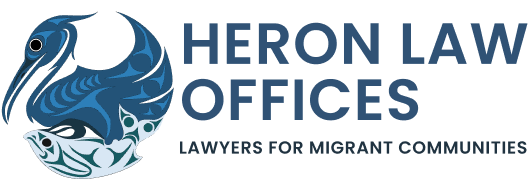








Let’s Get in Touch
Subscribe to Our Newsletter
Stay informed with our latest news and commentary.
Recent Blog Posts
Forgetting A Period of Employment = Misrepresentation? Quite Probably.
Introduction Under Canada’s new Express Entry system for Economic Immigration, Applicants are required at the profile creation stage to list their entire employment history for
The New Direction of Misrepresentation in Canadian Immigration: Criminal Inadmissibility
Introduction As I have covered in previous blogs on the topic, I believe Misrepresentation under s.40 of the Immigration and Refugee Protections Act [IRPA] is the
“Bad” Google Searches as Extrinsic Immigration Evidence + A Possible Solution
The recent Federal Court case of Chen v. Canada (Minister of Citizenship and Immigration) 2015 FC 771, highlights a growing problem in the assessment of immigration
BC Re-Opened July 2nd With New Programs and Criteria
I apologize for the long period of no posts. Even checking twitter for #cdnimm news has become a bit of a luxury with several urgent
Subscribe to Our Newsletter
Stay informed with our latest news and commentary.
Tags
My Value Proposition
My Canadian immigration/refugee legal practice is based on trust, honesty, hard-work, and communication. I don’t work for you. I work with you.
You know your story best, I help frame it and deal with the deeper workings of the system that you may not understand. I hope to educate you as we work together and empower you.
I aim for that moment in every matter, big or small, when a client tells me that I have become like family to them. This is why I do what I do.
I am a social justice advocate and a BIPOC. I stand with brothers and sisters in the LGBTQ2+ and Indigenous communities. I don’t discriminate based on the income-level of my clients – and open my doors to all. I understand the positions of relative privilege I come from and wish to never impose them on you. At the same time, I also come from vulnerability and can relate to your vulnerable experiences.
I am a fierce proponent of diversity and equality. I want to challenge the racist/prejudiced institutions that still underlie our Canadian democracy and still simmer in deep-ceded mistrusts between cultural communities. I want to shatter those barriers for the next generation – our kids.
I come from humble roots, the product of immigrant parents with an immigrant spouse. I know that my birth in this country does not entitle me to anything here. I am a settler on First Nations land. Reconciliation is not something we can stick on our chests but something we need to open our hearts to. It involves acknowledging wrongdoing for the past but an optimistic hope for the future.
I love my job! I get to help people for a living through some of their most difficult and life-altering times. I am grateful for my work and for my every client.
Awards & Recognition

Canadian Bar Association Founders' Award 2020

Best Canadian Law Blog and Commentary 2019

Best New Canadian Law Blog 2015
Best Lawyers Listed 2019-2021

2023 Clawbies Canadian Law Blog Awards Hall of Fame Inductee

Best Canadian Law Blog and Commentary 2021

Canadian Bar Association Founders' Award 2020

Best Canadian Law Blog and Commentary 2019

